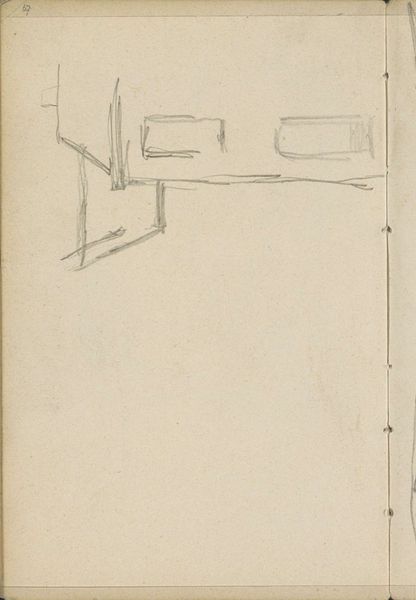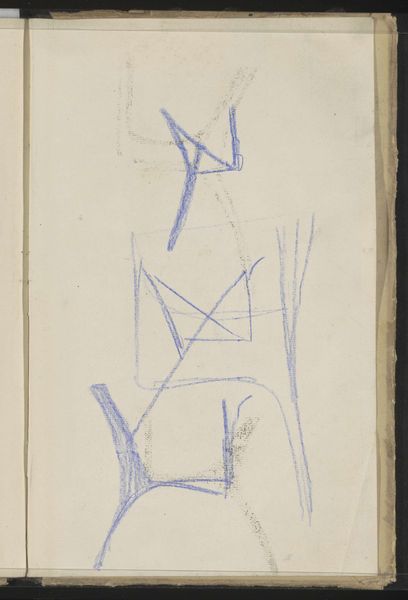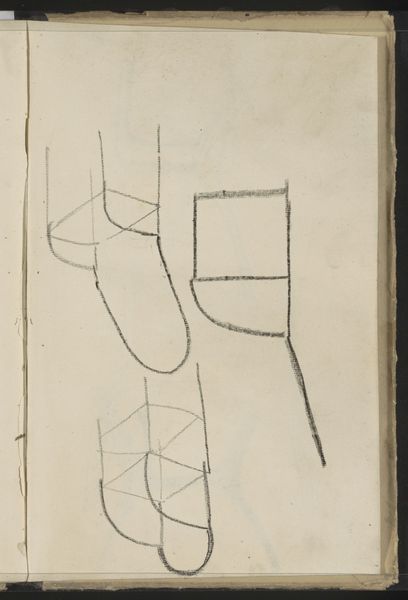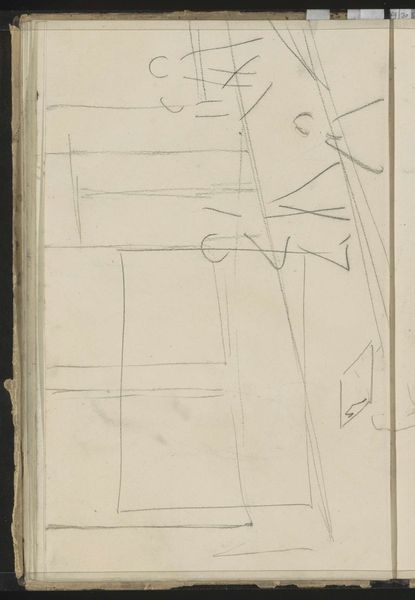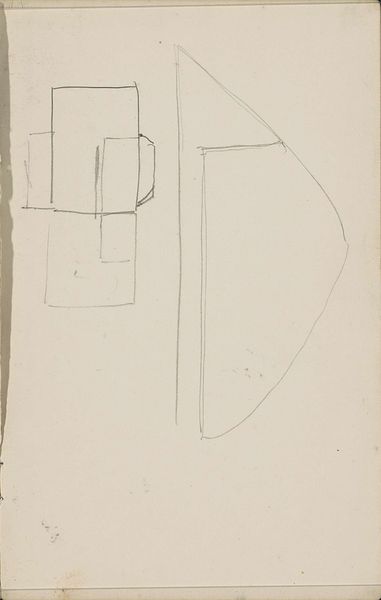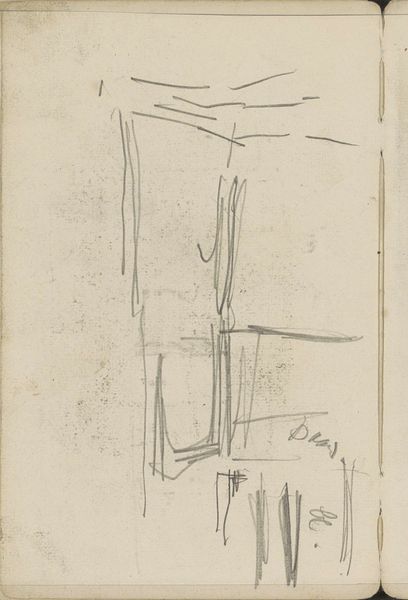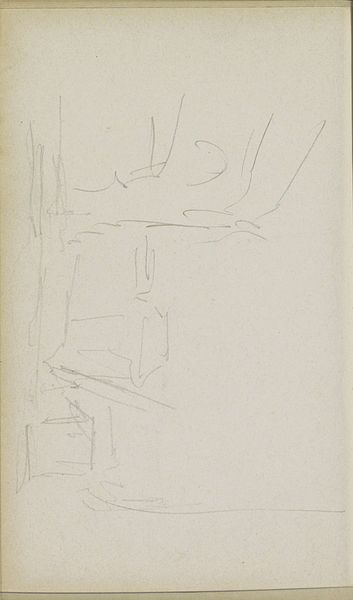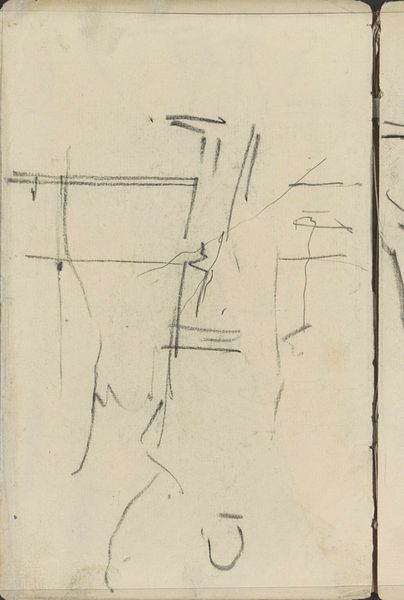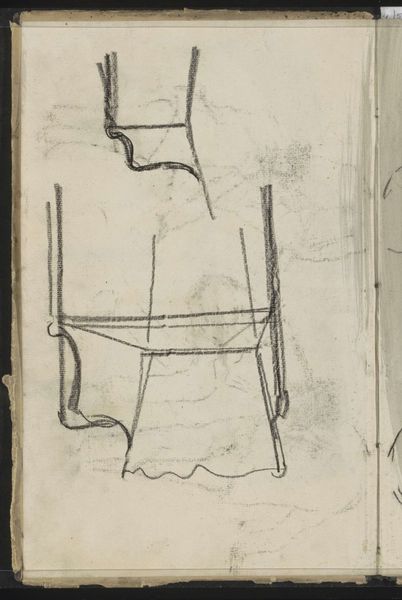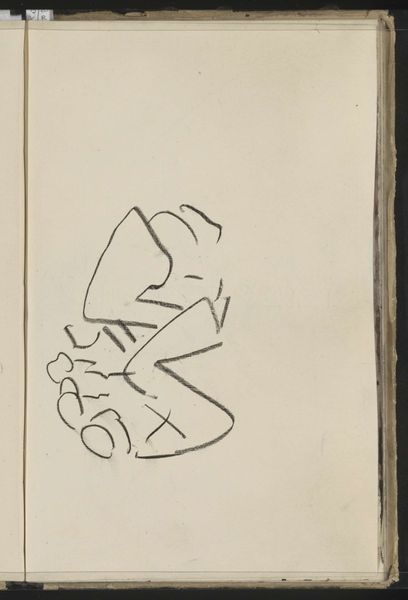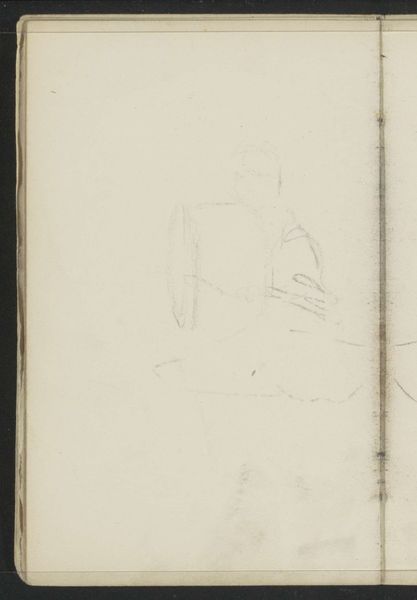
drawing, coloured-pencil, paper, pencil
#
drawing
#
coloured-pencil
#
paper
#
coloured pencil
#
geometric
#
pencil
Copyright: Rijks Museum: Open Domain
Curator: Carel Adolph Lion Cachet, circa 1890, rendered these studies of "Stoelen," or chairs, using pencil and coloured pencil on paper. Editor: My initial reaction is one of stark simplicity. There's a rawness to these sketched chair forms; it feels almost primal. Curator: It is tempting to consider the functionality and industrial context that prompted such drawings: in 1890 were Cachet producing his objects of comfort against a European background soon to experience profound economic transformation? In some ways it presents both functionality and abstraction. Editor: Absolutely. What interests me, though, is the tension between their potential use and their abstraction. Do they speak to how access and function are shaped through a societal lens? Curator: I find it intriguing that he focused on chairs. Considering chairs as everyday objects offers a grounding effect, they appear less as artistic displays, more as accessible items intended to support social existence. Chairs and sitting are bound into history and can be seen in myriad settings and situations, from the serious and authoritative to the restful and contemplative. Editor: Thinking of this as a product of its time –late 19th century – these pieces challenge us to think of these objects of everyday domesticity and their presence as statements on social expectations and standards of that time, with implications that still resonate. Were there particular conversations happening in domestic environments that can give these works contemporary currency? Curator: It makes you wonder. When viewed through the lens of social norms and comfort expectations, the study raises some profound points, no? Editor: Precisely! It asks us to question not just the aesthetics of living, but who gets to participate, who gets to feel supported in domestic and even public spaces. Curator: So, the essence of a utilitarian item becomes fertile ground for the critical theory of today. Who knew these chairs had so much to say! Editor: That's the power of art; everyday life interrogated for meaning!
Comments
No comments
Be the first to comment and join the conversation on the ultimate creative platform.
